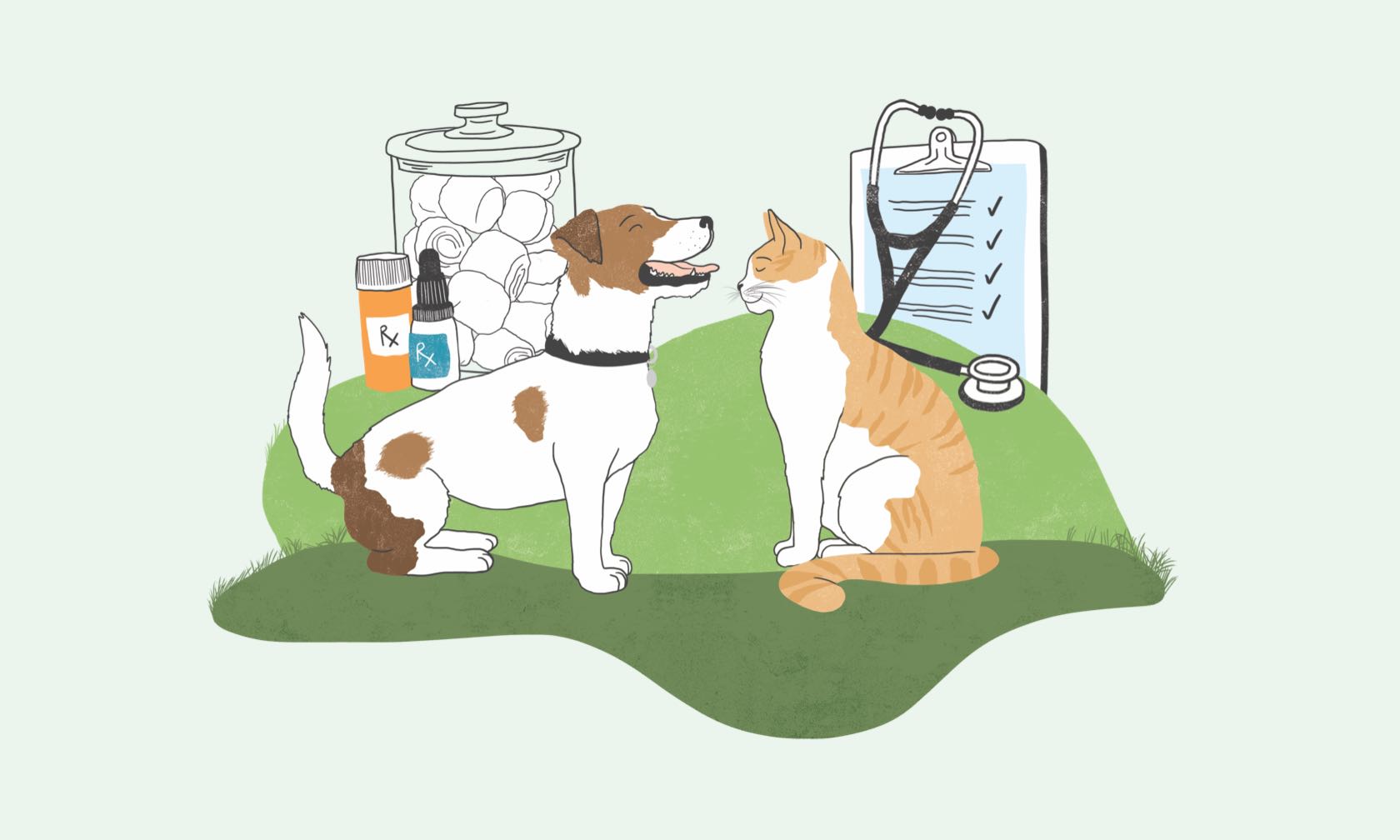Euthanasia (which comes from the Greek word meaning “good death”) provides a humane option to end the suffering of your beloved pet. The process permits the death of hopelessly sick, painful or injured animals in a relatively painless way for reasons of mercy.
Options for the Euthanasia of Pets
- At-home euthanasia. During an at-home euthanasia, a veterinarian comes to the pet's home to perform the euthanasia. This can be a more comfortable and less stressful option for both the pet and the owner.
- Clinic or hospital euthanasia. In-clinic euthanasia is when a pet owner brings their pet to a veterinary clinic or animal hospital for euthanasia. This option may be more affordable than at-home euthanasia.
What is At-home Euthanasia for Pets?
During an at-home euthanasia, the veterinarian will have all the necessary equipment and medication with them, ensuring a tranquil experience for both the pet and their owner(s). This is a service commonly used for cats and dogs, but it can also be used for other species of animals.
Here's what to expect with at-home pet euthanasia:
- Initial consultation. This usually starts with an initial phone call to the service. A client care specialist will discuss your pet's medical history, diagnosis, quality of life issues, and current medications. They’ll also answer your questions including information about cost and aftercare preferences (like burial or cremation).
- Beginning of in-home visit. Once the veterinarian arrives at your home, they’ll introduce themselves to the family and pet, with the pet being in any area of the house (or yard) where they are most comfortable. The ideal location is a place where your pet is comfortable and is free of noises and distractions. The veterinarian can discuss options of the places with you. They’ll also discuss the pet's condition with you and answer any additional questions you may have.
- Sedation. In most cases, the veterinarian will administer a sedative to your pet. During this time, the pet is given treats and petted until they fall into a deep sleep-like state, so they won't feel any pain or discomfort. In some cases, the veterinarian may place an IV catheter in your pet’s leg to inject the euthanasia solution.
- Euthanasia medication. Once your pet is sedated and resting comfortably, the veterinarian will administer the euthanasia agent. This medication works quickly to stop the pet's heart and breathing, resulting in a peaceful passing. They will often pass within a few minutes.
- Aftercare. This typically includes cremation or burial services. Your pet can be taken for cremation or left with the family if you have a special burial place. If cremation is chosen, the veterinarian can take your pet to a cremation service, and the remains are either picked up or shipped to your home. In addition, they may also offer grief counseling and support resources for the owner following the euthanasia.
At-home euthanasia, in most cases, provides a more comfortable and familiar environment for the pet and the ability for the owner to say goodbye in the comfort of their own home. Families who want an at-home euthanasia, need to plan this out and give a few days’ notice for the veterinarian to come to the home. Frequently, these types of procedures cannot be done on weekends. Another thing to consider about at-home euthanasia is thinking about the other animals and children in the household. An at home euthanasia with other pets or children can sometimes be more stressful for the pet being euthanized and for those household members. At-home euthanasia may be a more expensive option than other methods, such as taking the pet to a veterinary clinic, but many pet owners feel that the comfort and convenience of the service are worth the extra cost.
On the other hand, some pet owners may have difficulty with the idea of going through that experience and having the memory of saying goodbye in their home, even if it's easier for their pet to be at home. Your needs matter in this process as well. Consider what will help you through that day and the following weeks as you grieve.
What is In-Hospital Euthanasia for Pets?
In-hospital euthanasia is where a veterinarian performs the euthanasia of a beloved pet in a veterinary hospital or clinic setting. This may be done for a variety of reasons, including the pet being terminally ill or suffering from a condition that is causing them significant pain and suffering. Because euthanasia at the hospital or clinic can typically be done faster, it’s especially applicable for pets who are in critical condition, such as pets suffering from respiratory distress or cardiac arrest, or one who is unresponsive to voice and/or handling.
In many cases, pet owners choose in-hospital euthanasia for their pet to have the support of a trained veterinary team available during this difficult time. It also allows pet owners the option to be present with their pet during the procedure (if they choose to) and to say goodbye in a calm and controlled setting.
The process of in-hospital euthanasia for pets involves the same steps as at-home euthanasia: consultation, sedation, euthanasia medication, and aftercare. The major difference is the settling in which the euthanasia procedure is conducted.
Which Euthanasia Service Is Right for You and Your Pet?
Neither option is better than the other. Take the time for your family to learn about these options before an emergency arises, if possible. Discuss all options with your veterinarian to ensure that your pet's comfort and well-being are considered. It's also important to understand the emotional toll that euthanasia can take on a pet owner and to seek support if needed.
No matter the location of euthanasia, your veterinary care professionals are dedicated to making your pet's last moments peaceful and comfortable.
ZPC-02566



